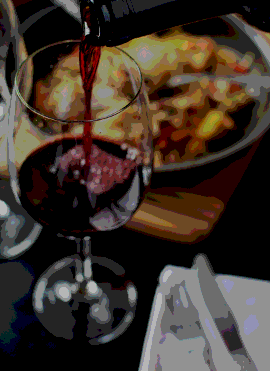Categories
-
Wines
- Wine Outlet
- Wines from Germany
- Wines from New Zeland
- Wines from USA
- Wines from Italy
- Wines from Chile
- Portugal
- Wines from Australia
- Wines from Hungary
- Argentina Wines
- Francia
-
Spanish Wines
- Vinos de Andalucia
- Baleares
- Vinos La Rioja
- Galicia
- Extremadura
- Vinos de Valencia
- Vinos de Aragón
- Cataluña
- Castilla y León
- Castilla La Mancha
- Vinos de Murcia
- Vinos Espumosos - Método Tradicional
- Vinos de Madrid
- Vinos de Navarra
- Cava
- Otras regiones
- Wines from the Canary Islands
- Vinos de Asturias
- Vinos de Euskadi (País Vasco)
- Wines of Switzerland
- Wine accesories
- Gifts
- Liquors
- Gourmet
- Private Sale
- Vinos Blancos
List of products by manufacturer Clos D'Agon (Grupo Mas Gil)
The story of the Clos d’Agon winery begins in 1987, when a French couple decides to buy the old country house Mas Gil, where 12 hectares of vineyard planted with hybrid varieties, narrow planting frames and glass conduction already exist. The owners get advice from professionals like Pierre Galet and André Crespy, professors at the University of Montpellier, and decide to pull up the old vineyard and plant prestigious French varieties for the production of quality wines.
The story of the Clos d’Agon winery begins in 1987, when a French couple decides to buy the old country house Mas Gil, where 12 hectares of vineyard planted with hybrid varieties, narrow planting frames and glass conduction already exist. The owners get advice from professionals like Pierre Galet and André Crespy, professors at the University of Montpellier, and decide to pull up the old vineyard and plant prestigious French varieties for the production of quality wines.
After this stage, six Swiss wine lovers and friends, including Franz J. Wermuth (Les Grands Vins Wermuth), Frank Ebinger (Casa del Vino Ebinger) and Silvio Denz (Château Faugères, Château Rocheyron, Château Lafaurie-Peyraguey, Montepeloso) acquire this renowned viticultural environment in 1998 and hire, as wine consultant, the oenologist Peter Sisseck, who produces in Ribera del Duero great wines such as Pingus, Hacienda Monasterio, etc.
At this stage a new project towards an increased production of quality wines is undertaken, with the construction of a new winery designed by architect Jesús Manzanares and an increased plantation area by retrieving old terraces in the higher parts of the property.
Currently, the technical director Miguel Coronado, advised by oenologist Peter Sisseck, continues working to make the most of the particular terroir of Clos d’ Agon, and to thereby further develop great wines that are characterized by a marked style and quality.
The winery
A modern attractive building integrated into its surroundings
The winery and a 350-year-old country house, which has a beautiful and sunny terrace overlooking the sea, are situated in the middle of the vineyard.
The construction of a larger winery began in 2002 and ended in 2006. Fermentation rooms have thermoregulated steel tanks. The malolactic fermentation and aging rooms, fully air-conditioned, are located on both sides of the fermentation room. The reception area is located at a higher level, allowing us to work by gravity in most of the process.
The vineyard
Its location, characteristics and management
The vineyard is situated on the plateau behind Calonge in the protected natural area “Les Gavarres”. It has a Mediterranean climate influenced by the Tramuntana and the breezes from the sea.
The grape harvest usually begins in early September and ends in mid-October. The vines grow on clay and slate soils with a mainly North – South orientation. The Red grape varieties that are used are Syrah, Cabernet Franc, Merlot, Cabernet Sauvignon and Petit Verdot. The white ones are Viognier, Marsanne and Roussane.
Plants are pruned during dormancy in winter, using the traditional “double Guyot” system.
During vegetative growth, we always work carefully removing excess buds, carrying out green pruning, cluster thinning and leaf-stripping.
We know that great wines are made in the vineyard and not in the cellar.
The environment
Baix Empordà, Costa Brava, Gavarres, Calonge

Clos d’Agon is located in the beautiful area of Calonge, on the Catalan Costa Brava. Historical olive and exotic trees look back to an ancient culture which was already connected to wine. 350 years ago grapevine was already cultivated here. Clos d’Agon is located approximately between 40 and 140 meters above sea level, protected and encased by large forests that make up the natural protected space “Les Gavarres”. The total area of the wine environment covers about 42 hectares, of which approximately 15 are planted with vines.
No products for this manufacturer.










